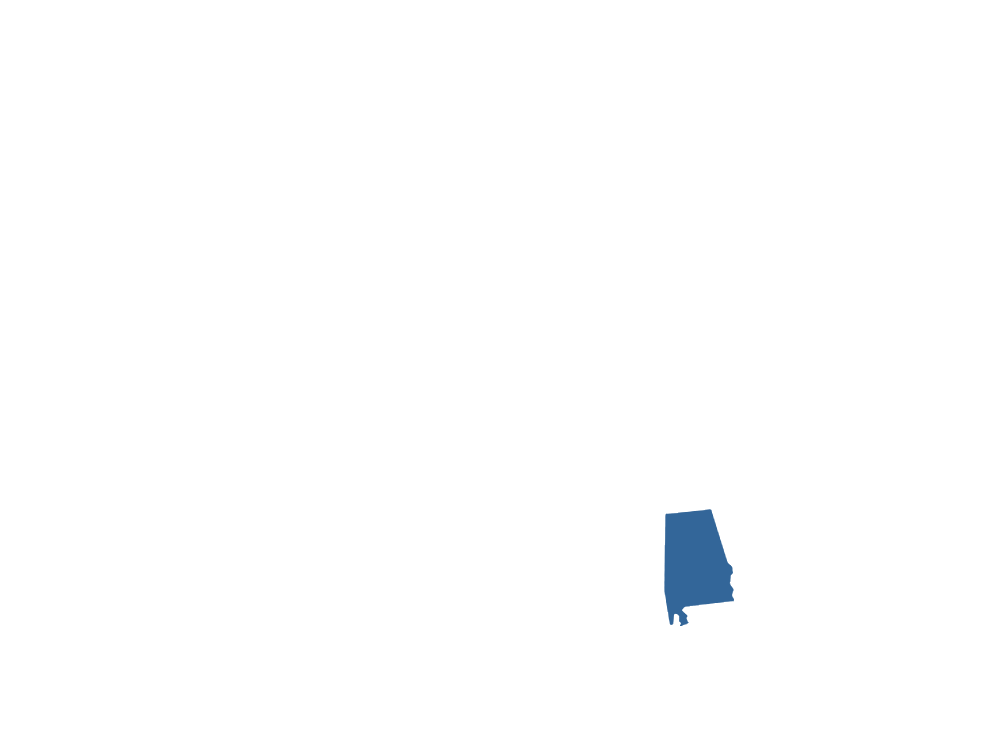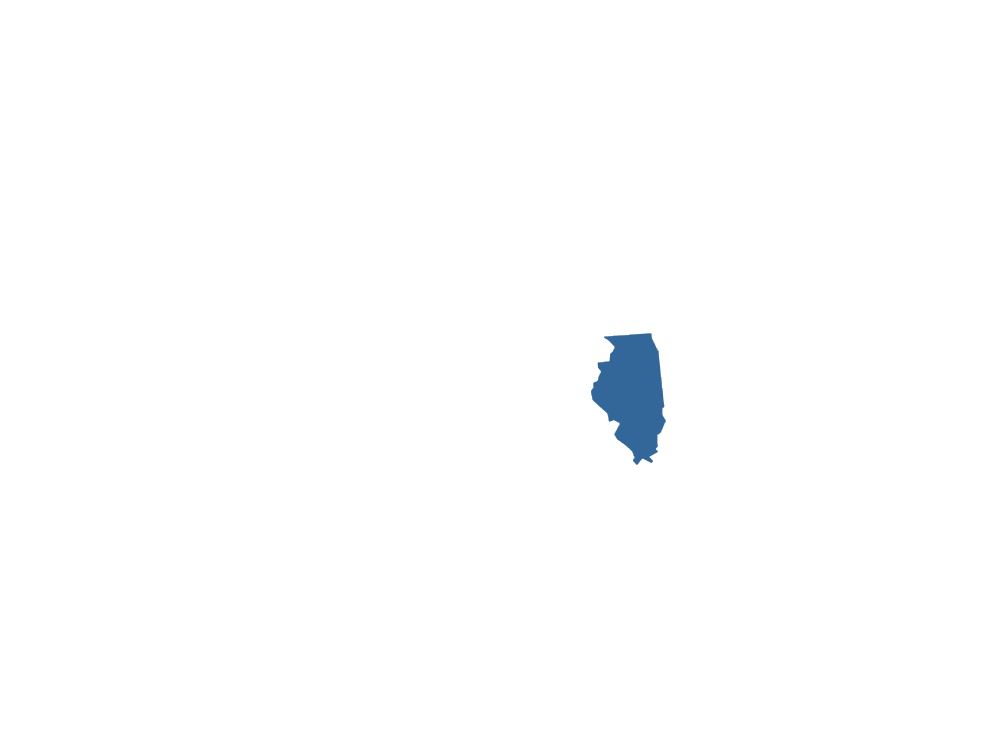The youngest form of an Afflicted Dagger Moth caterpillar has a pale orange body and slightly oversized head. Branching clusters of bristly hairs cover the body. It is more common to see it when it is a larger, plumper orange-brown with a brown-black head. At that stage, fine, short white bristles stick out of its face and sides. This caterpillar might also have a ghostly white body instead, with a pale purple head. On top of each body segment, a pair of black hair-like setae grow upward, one on either side of the midline like antennae. These pairs of setae are helpful in identifying it.
Afflicted Dagger Moth caterpillars feed on both red and white varieties of oak leaves. It is unclear why its common name is 'Afflicted'. It does not seem to be under threat, nor does it seem to be a significant burden on its host tree.©CaterpillarIdentification.org
The map above showcases (in blue) the states and territories of North America where the Afflicted Dagger Moth Caterpillar may be found (but is not limited to). This sort of data can be useful in seeing concentrations of a particular species over the continent as well as revealing possible migratory patterns over a species' given lifespan. Some species are naturally confined by environment, weather, mating habits, food resources and the like while others see widespread expansion across most, or all, of North America.*NOTE: States/Territories shown above are a general indicator of areas inhabited by the Afflicted Dagger Moth Caterpillar. Insects generally go where they please, typically driven by diet, environmental changes, and / or mating habits.
| |
The CaterpillarIdentification.org logo, its written content, and photography are unique to this website (unless where indicated) and is protected by all applicable domestic and international intellectual property laws. The material presented across this site is for entertainment value and should not be construced as usable for scientific research or medical advice (insect bites, etc...) Please consult licensed, degreed professionals for such information. By submitting images to us (CaterpillarIdentification.org) you acknowledge that you have read and understood our as it pertains to "User-Submitted Content". Images can be submitted to caterpillaridentificationorg at gmail.com. No A.I. was used in the generation of this content.
Part of the Insect Identification network of sites that includes , , , and .
©2024 www.CaterpillarIdentification.org • All Rights Reserved • Content ©2019-2024 (5yrs)






















































